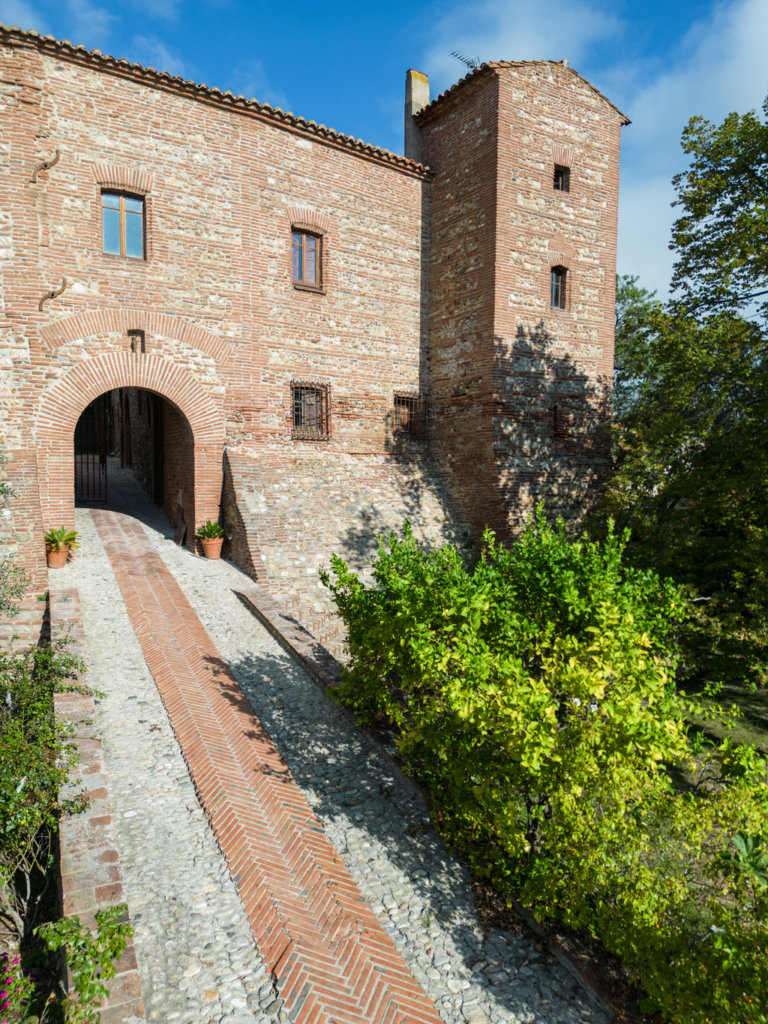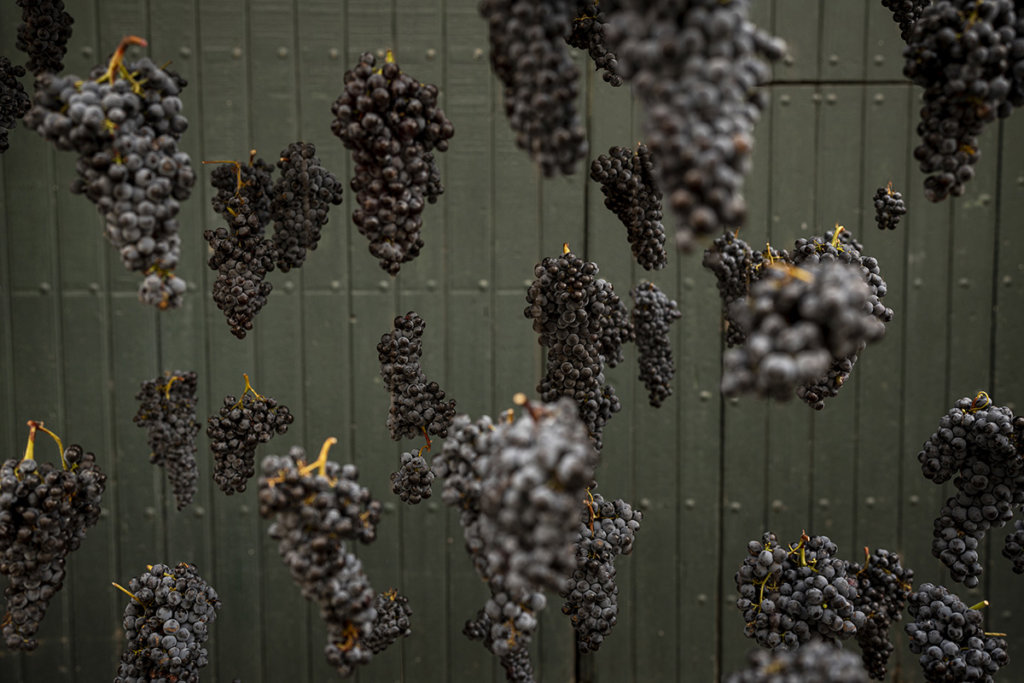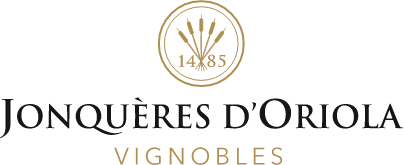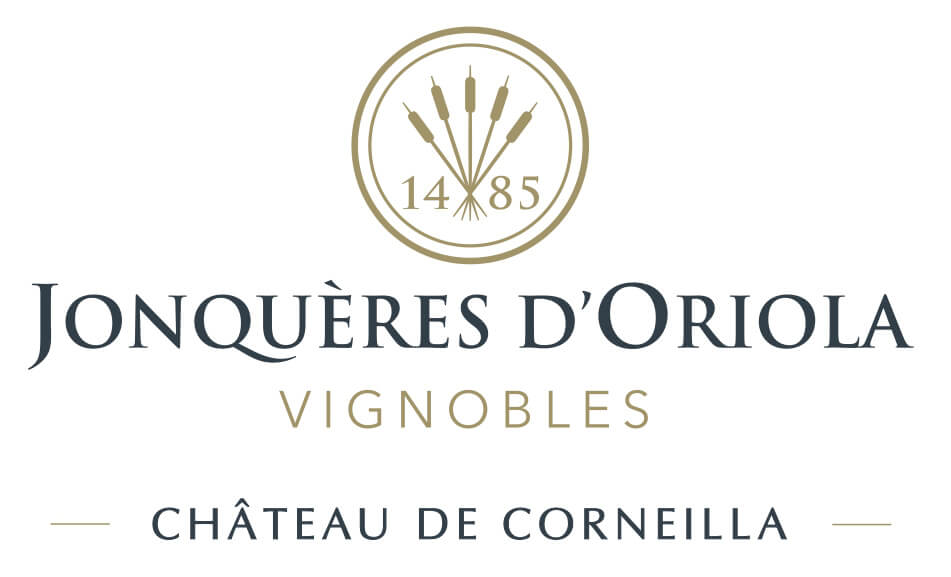Tout savoir sur le cycle de la vigne
La philosophie du Château de Corneilla
Depuis 1485, 27 générations de vignerons se sont succédées au Château de Corneilla et avec elles, tous les secrets de l’élaboration des millésimes successifs de la propriété. Pour obtenir les meilleures cuvées, les équipes du domaine prennent soin chaque année de leurs vignes dans le but de transmettre un vignoble sain et vivant.
Le cycle de la vigne au Château de Corneilla
Chaque année, nos vignes passent par différentes étapes :
La phase hivernale ou phase de dormance.
Elle s’étend suivant les régions de novembre à mars. A la fin des vendanges, les feuilles changent peu à peu de couleur et finissent par tomber. La sève redescend dans les pieds de vigne. Les plants se reposent avec le froid.
Durant cette phase de repos végétatif, les travaux continuent cependant dans les vignes :
- La taille est une étape importante qui permettra de structurer la repousse et de la concentrer dans certains sarments. Il existe différents types de taille qui dépendent de la manière avec laquelle les pieds ont étés plantés et entretenus : taille en gobelets, en cordon, ou en guyot.
- les couverts végétaux sont plantés dans les vignes, afin d’apporter de la biomasse dans les sols. Les légumineuses de type féverole apporteront de l’azote quand les céréales de type seigle apporteront de la matière organique.
Vient ensuite la phase de cycle productif :
Cette phase commence généralement en mars, au début du printemps et se termine en octobre à la fin des vendanges. Elle peut se diviser en différentes étapes successives :
- Les pleurs de la vigne : c’est ainsi qu’est appelée la période où la sève remonte dans les sarments et laisse échapper quelques gouttes de sève à l’endroit où les sarments ont été coupés durant la taille. La vie reprend dans les vignes !
- Le débourrement : l’apparition des premiers bourgeons sur les sarments. En se fendant, ils laisseront se déployer les premières feuilles.
- La feuillaison : les feuilles se développent et continuent leur croissance
- La floraison : les petites fleurs blanches apparaissent en forme de grappes
- La nouaison : les fleurs laissent place à de petits grains de raisin verts
- La véraison : après avoir grossi, les baies changent de couleur progressivement.
- La maturation : c’est l’étape qui sera la plus surveillée jusqu’à ce que soit donné le départ des vendanges !
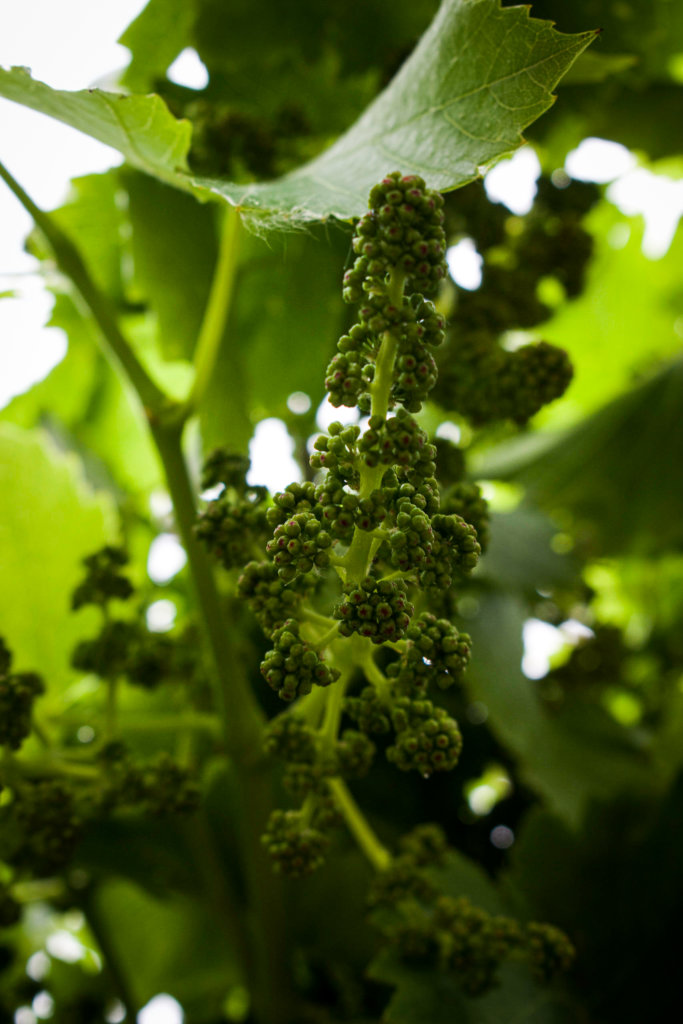
Les travaux dans les vignes à cette période sont nombreux : les travaux en vert avec la gestion du palissage afin d’aérer au maximum les pieds de vignes tout en gardant une surface foliaire suffisante pour optimiser la photosynthèse mais aussi la protection des raisins.
Au Château de Corneilla, nous contrôlons régulièrement la maturité des raisins afin de les accompagner au mieux vers la récolte.
Comment lutter contre les prédateurs dans les vignes ?
S’adapter à la faune et à la flore
Dans le but de favoriser une agriculture régénératrice, nous menons avec conviction une réflexion sur la biologie des sols. Notre objectif est de comprendre le fonctionnement de la biodiversité afin de la protéger tout en continuant à produire le meilleur vin possible. Nous appliquons progressivement des méthodes de culture alternatives afin de laisser l’activité biologique en autonomie et favoriser une faune auxiliaire dans nos vignes.
Tous les vignerons les connaissent. Certains sont redoutés, d’autres sont appréciés : les insectes et les acariens. Nous allons vous présenter ceux qui nuisent à la vigne et à la production de raisins.
Exemples d’insectes nuisibles pour nos vignes
Un grand nombre d’insectes nuisibles se répandent dans les vignobles des viticulteurs. Ils peuvent détruire le travail du vigneron (les tordeuses de la grappe, les cicadelles, les cochenilles, les pucerons…). Ils appartiennent pour la plupart à la famille des tordeuses. C’est pendant la phase de larve que le papillon est le plus destructeur pour les végétaux.
La cicadelle verte
La cicadelle verte est un insecte piqueur, considéré comme un ravageur secondaire. Ses larves peuvent provoquer des grillures sur les feuilles. Pour se nourrir, elles introduisent leurs stylets dans les vaisseaux et les tissus des feuilles pour prélever les nutriments. Redoutée par les viticulteurs, la cicadelle est le vecteur de la flavescence dorée, pouvant provoquer l’arrachage de la parcelle.
L’eudémis de la vigne
L’eudémis (Lobesia botrana) fait partie des tordeuses de la vigne. Cet insecte, de par l’activité phytophage de ses chenilles, compte parmi les ravageurs majeurs de la vigne qui nécessitent une surveillance permanente. Comment reconnaître les œufs ? Translucide puis jaunâtre, l’œuf mesure environ 0.65 mm. Et les larves ? Elles sont identifiables par leurs mouvements vifs et leur couleur variable, allant du jaune-vert au brun-clair.

Comment favoriser la biodiversité dans les vignes ?
De nos jours, les consommateurs prennent de plus en plus conscience que leurs choix peuvent avoir un impact sur les ressources naturelles. Menacées par la surexploitation, nous avons comme mission de donner un nouvel élan à la biodiversité.
Au Château de Corneilla, la préservation de la biodiversité est devenue une préoccupation majeure. Impactée par de nombreuses activités agricoles, notamment la viticulture, la biodiversité compose le patrimoine naturel que nous allons laisser en héritage aux générations futures. Ainsi, nous avons comme mission de préserver au maximum notre environnement. La biodiversité est indispensable au bien-être et à la santé des êtres humains. Consommateurs comme viticulteurs, nous pouvons tous jouer un rôle dans la restauration et la préservation des espèces et des paysages.
Quels sont les principes clés de l'agriculture régénératrice ?
L’agriculture régénératrice repose sur des pratiques agricoles dont l’objectif premier est de régénérer les sols, c’est-à-dire d’augmenter leur teneur organique pour en améliorer la fertilité. Cette philosophie se concentre sur le rendement et la qualité de la production, mais aussi sur la santé du sol et de l’écosystème.
Au Château de Corneilla, nous menons avec conviction une réflexion sur la biodiversité tout en favorisant une agriculture régénératrice. Pour vous donner un exemple, l’ensemble de nos parcelles est exploité par une agriculture raisonnée labellisée HVE 3 (Haute Valeur Environnementale). Le label HVE a pour ambition d’inciter les vignerons à adopter une démarche globale de développement durable (protection de la nature, régénération des sols et de leur fertilité…).
La préservation de la biodiversité est devenue un enjeu majeur dans l’agriculture et la viticulture. Plus que jamais, les vignerons ont un rôle à jouer dans la restauration et la préservation des espèces et des paysages. Si vous souhaitez en savoir plus sur nos différents engagements, nous avons un article à vous conseiller sur notre vignoble.
Les bénéfices des vents sur les vins du Sud de la France
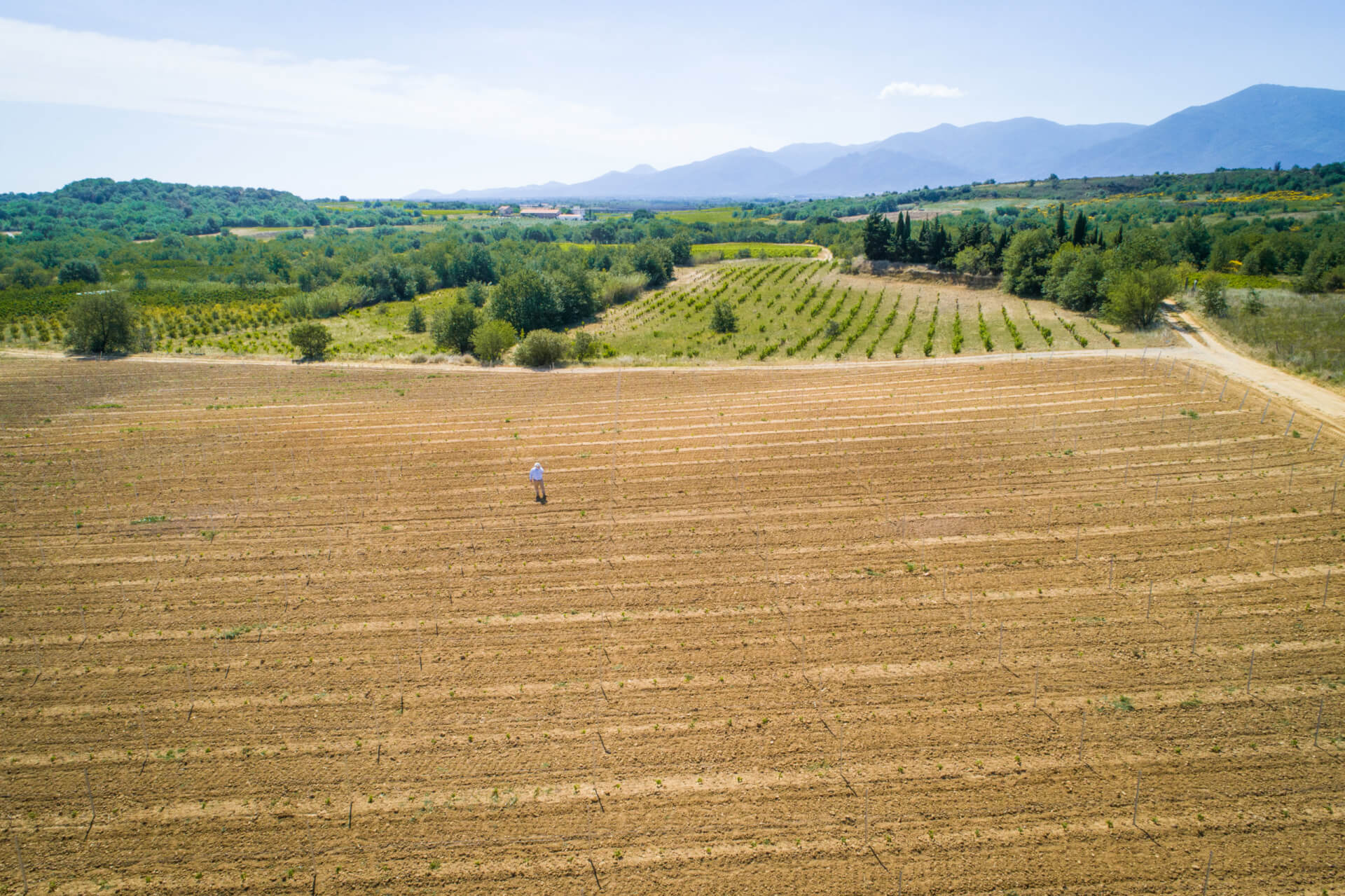
Les types de vents sur les vins du Sud de la France
Les vins du Sud de la France englobent les vignobles du Pays d’Oc, du Roussillon et du Languedoc. C’est la première région viticole de France grâce à sa superficie et son volume de production. La richesse de sa biodiversité est, sans aucun doute, liée au climat de son territoire. Connue comme l’une des régions les plus venteuses, l’Occitanie jouit de quatre types de vent.
- Le mistral est un vent régional froid et sec qui souffle par rafales le jour. Il succède généralement au passage d’un froid pluvieux.
- La tramontane présente des similitudes avec le mistral, c’est un vent violent et froid qui peut apparaître à toutes les saisons.
- Le marin souffle sur toute la zone littorale méditerranéenne et entraîne généralement des précipitations abondantes.
- L’autan est un vent de beau temps qui est associé à des conditions météorologiques douces ou, à l’inverse, annonciateur d’épisode orageux.
Mais pourquoi le vent est-il si bénéfique aux vignes du Sud de la France ?
Les bénéfices des vents sur les vins du Sud de la France
L’ensoleillement n’a plus de secret pour nous, c’est lui qui favorise le plus la maturation du raisin. Mais quel est le rôle du vent pour la vigne ?
Le vent est un élément régulateur qui va protéger la vigne de certaines maladies. Il constitue un véritable rempart car il va renouveler les masses d’air et modifier la température mais aussi l’humidité qui peut entourer les vignes. En effet, le mistral et la tramontane ont tendance à assécher et à ventiler les vignes. Ils aident à limiter la germination des champignons et favorisent la dispersion des insectes. Les vents humides, comme le vent marin ou l’autan, vont quant à eux aider la maturation des raisins.
Quels sont nos différents labels ?
Qu'est-ce que le label HVE en viticulture ?
L’objectif de ce label est d’adopter une démarche globale de développement durable et d’inciter à la protection de la nature. C’est pour cela que nos différentes parcelles sont sélectionnées avec rigueur. Nous avons pour ambition de produire des vins plus respectueux de la nature qu’en agriculture dite « conventionnelle ».
Avec le label HVE (Haute Valeur Environnementale), nous avons conscience que nous pouvons tous avoir un impact positif. De ce fait, nous mettons tout en place pour minimiser les impacts de notre métier sur l’environnement. Ces actions sont principalement réalisées pour les générations futures à qui l’on veut transmettre une terre naturelle.
Quelle est la réglementation du label HVE ?
Cette dernière est réglementée par le Ministère de l’Agriculture. Cette réglementation différencie 3 niveaux de certification environnementale : le niveau 1, le niveau 2, puis le niveau 3. L’ensemble de nos parcelles sont exploitées par une agriculture raisonnée labellisée HVE 3. Les 4 thématiques à respecter sont les suivantes : la biodiversité, la gestion de la fertilisation, la stratégie phytosanitaire et la gestion de la ressource en eau. Avant d’avoir été certifié HVE 3, nous avons dû prouver que nous respections les seuils définis par les différents indicateurs ci-dessus.
Afin de conserver ce label, un organisme certificateur agréé par le ministère chargé de l’agriculture est chargé de vérifier que les consignes environnementales soient bien respectées
Tout savoir sur notre huile d’olive biologique
Notre verger, conduit en Agriculture Biologique, est certifié ECOCERT. Nous utilisons deux variétés d’olives locales : l’Olivière et l’Arbequine qui produisent de l’huile en qualité VIERGE EXTRA, fruitée et de caractère. En obtenant cette certification, nous avons renforcé le lien de confiance avec nos consommateurs. En effet, communiquer de manière transparente a toujours fait partie de nos valeurs, que ce soit concernant l’origine de nos produits ou sur l’authenticité de nos engagements.
